

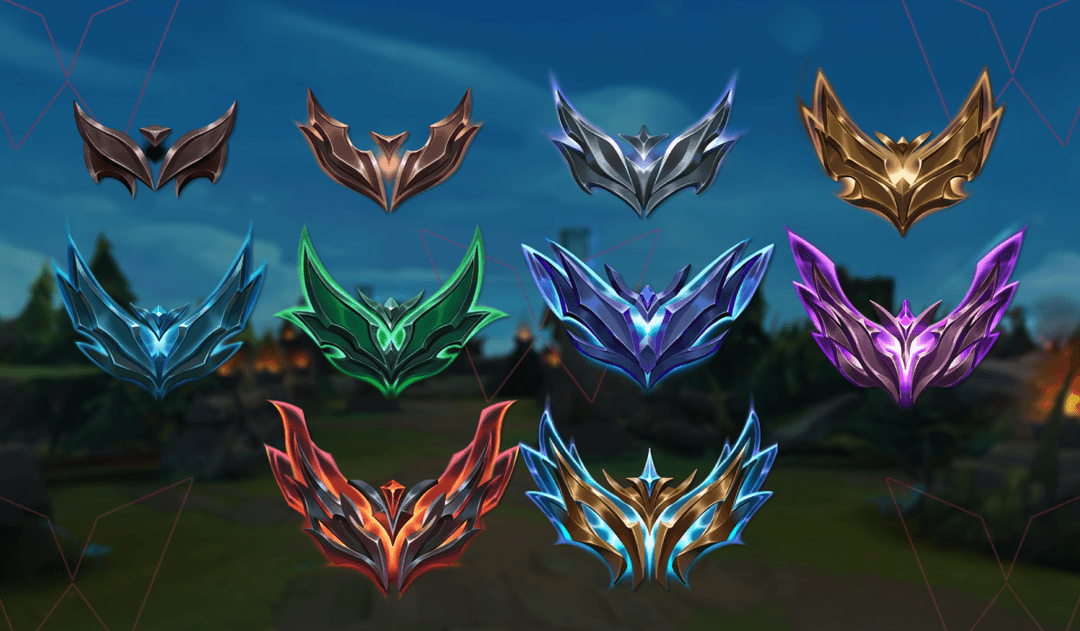
When the client chimes “Shiiing Doom!” as a match being found, you accept the queue pop and get into another League of Legends ranked game.
Then you fast forward to an ending screen with either a Victory or a Defeat. Why does this matter? And why are millions of players repeating those thrilling cycles every day? The answer is found within the League of Legends ranking system.
We’re going to discuss everything about the LoL ranked system, including how it works, and how you can really start climbing the ranked ladder.
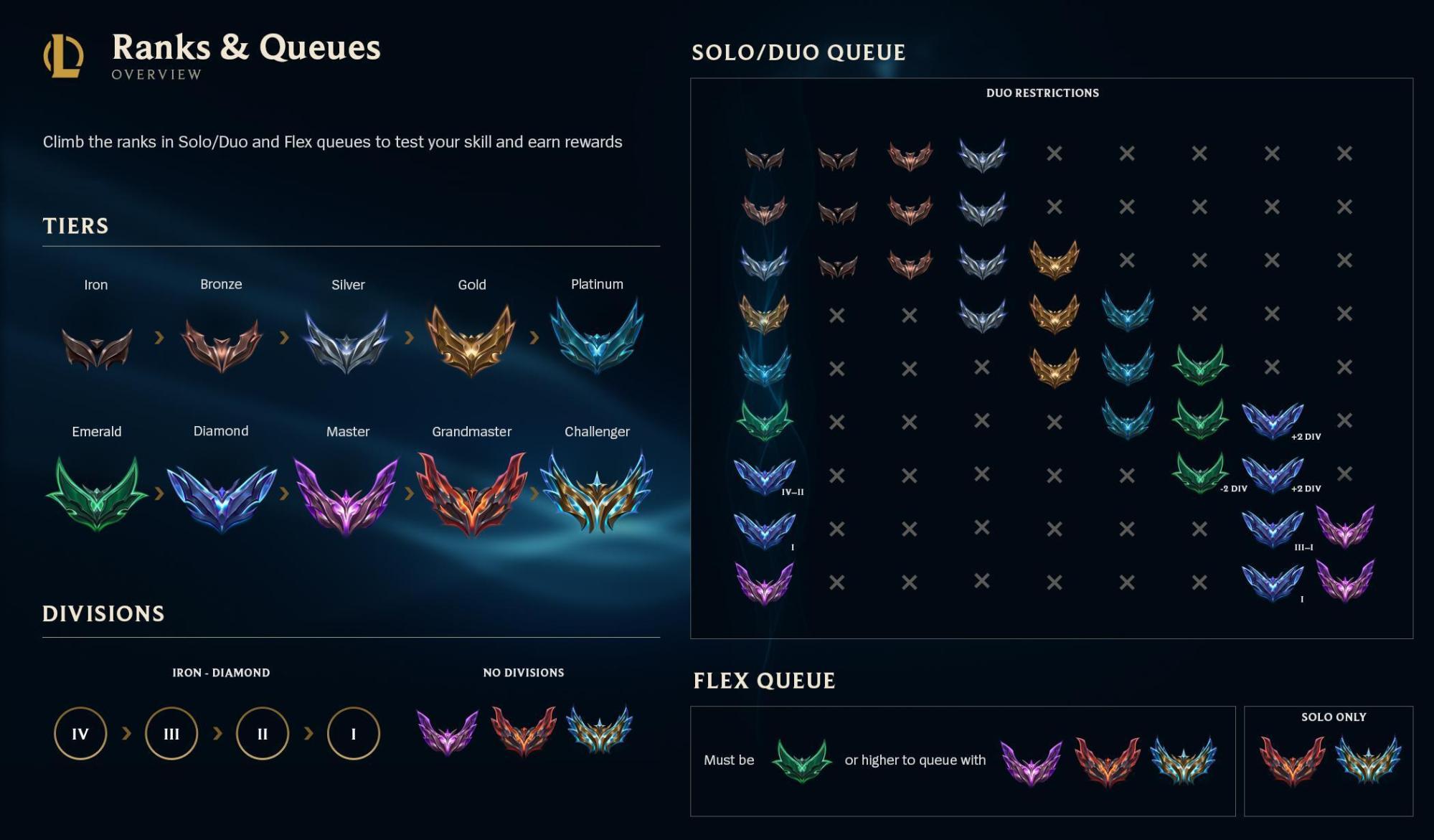
League ranking system, by definition, sorts all players into their rightful place. This structure is built on two core components: tiers and divisions.
There are ten tiers representing broad skill brackets, in ascending order:

Within each tier from Iron to Diamond, you’ll find four divisions, numbered IV (the entry point) to I (the peak). Climbing from Silver IV to Silver I means you’re about to promote to Gold IV. Tiers plus divisions are a clean measure of progress.
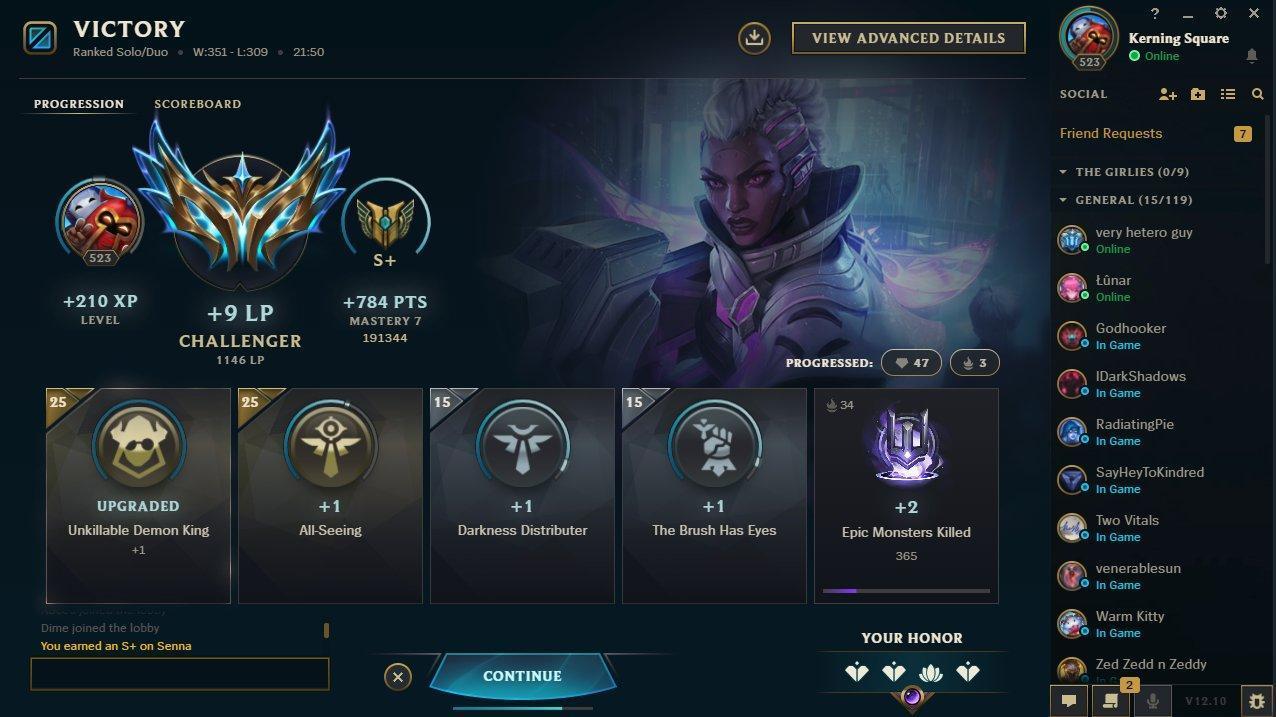
How do you move between these divisions and tiers? The answer is League Points, or LP. Win a match, you gain LP. Suffer a defeat, you lose some LP.
When you hit 100 LP in any division, you automatically ascend to the next. That’s it. Riot Games streamlined the process by removing the old, tilting promotion series between divisions and tiers. Now, it’s much easier to promote and rank up. Reaching 100 LP in Gold II gets you straight to Gold I. And reaching 100 LP in Gold I? You will automatically be promoted to the next tier, Platinum IV.
Conversely, dropping to 0 LP and losing another few games at 0 LP puts you at risk of demotion. The system has a bit of a safety net, but consistent underperformance will see you drop to the division below.
LP works as simply as explained above, direct and visible.
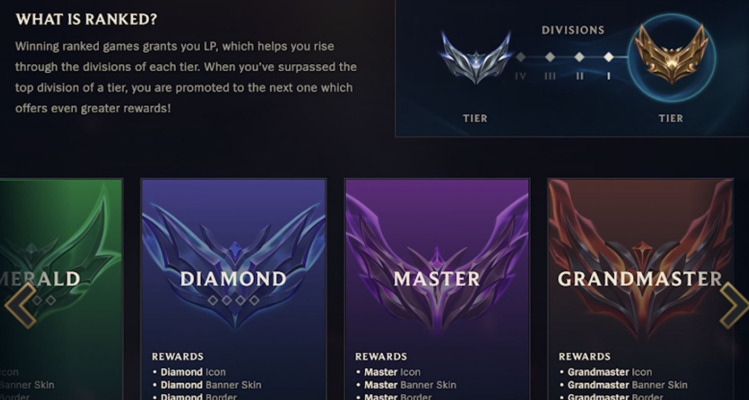
Here’s where things get interesting. Behind your rank and the fluctuating LP, there’s another system at work: your Matchmaking Rating, or MMR.
MMR is not visible to you. It’s a hidden score that Riot Games uses to gauge your actual skill level. It rises with wins and falls with losses, but its calculations are far more complicated and mysterious than the LP system.
Why does it matter? Your matchmaking depends on it because your MMR determines the players you get and your LP gains and losses. To put it simply:
You’ll be placed in ranked games with and against players of similar MMR, that is, a similar skill level, creating a fairer competitive environment.
If your MMR is higher than the average for your current rank, the system believes you’re underrated. To correct this, it will award you higher LP gains for a win and mitigate some LP for a loss.
If your MMR is lower than your rank suggests, the system thinks you might be out of your depth. You’ll find yourself earning less LP for wins and losing more for losses.
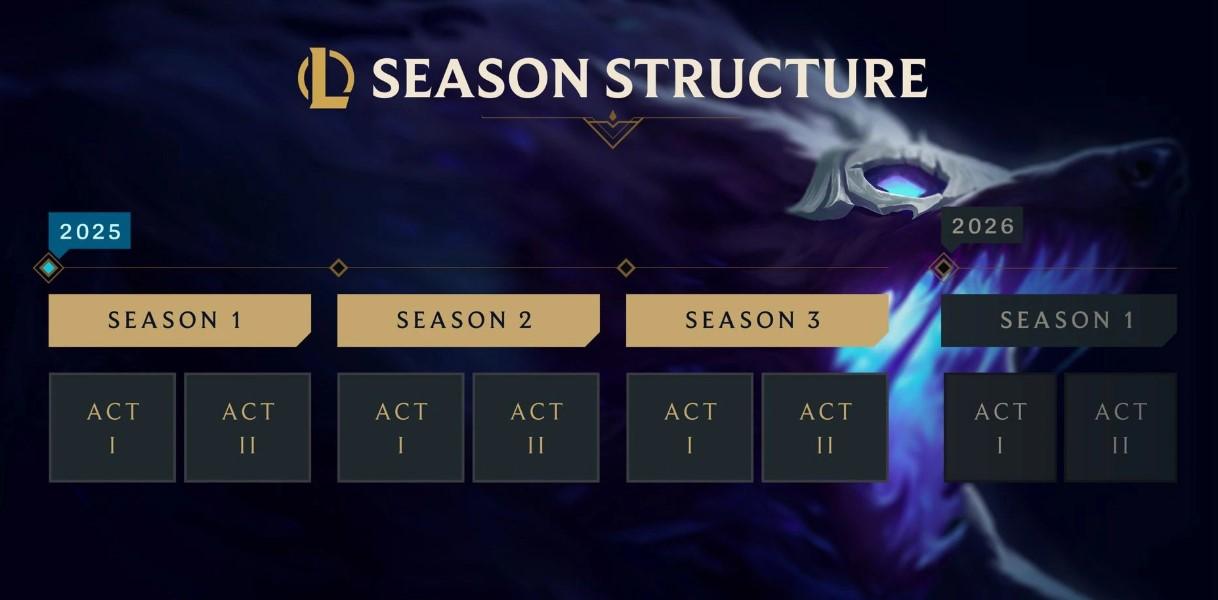
League of Legends' ranked system used to have a year-long season with three Splits. However, from 2024 onwards, each ranked year now has three Seasons, and each Season is further divided into two Acts.
Each Season lasts about 4 months, and each Act lasts 6-8 weeks. New Seasons and Acts accounts for major updates challenges, and fresh content, ensuring everyone proves themselves in the current meta.
At the start of every new Season (not Act), there is a soft rank reset. It prevents burnout and gives players a fresh start each year, keeping the climb motivating while letting Riot recalibrate MMR so ranks reflect true skill.
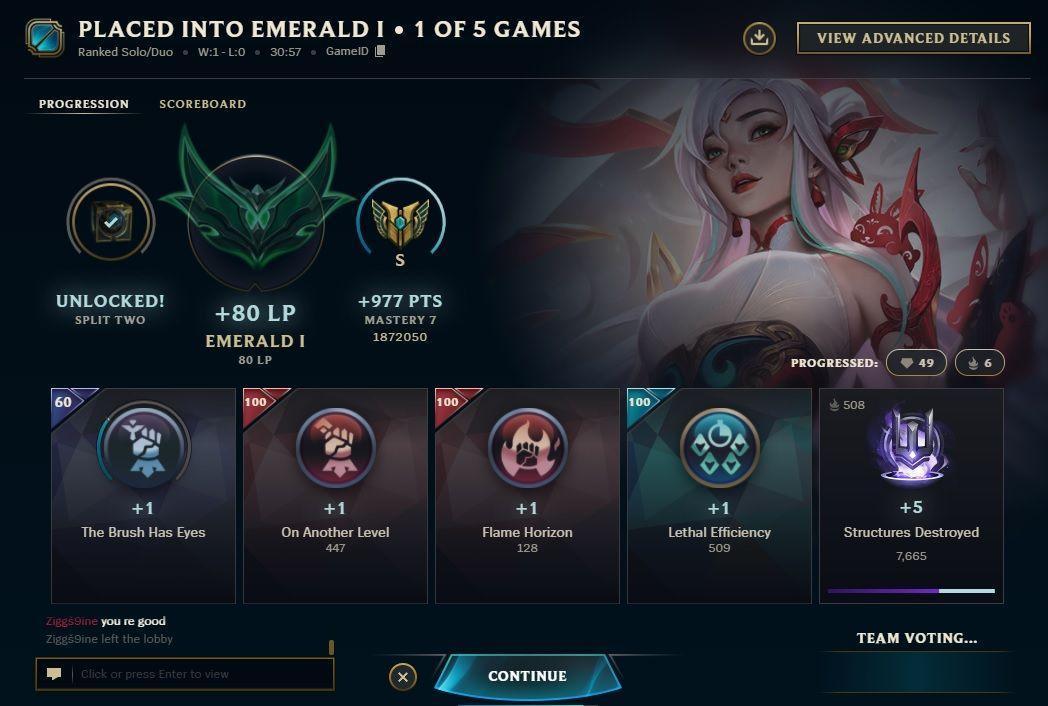
To determine your starting rank at the beginning of each Season, you must complete a series of five placement matches. You gain much more LP per win compared to non-placement matches, and you don’t lose any LP per loss or dodge. Your performance in these initial games, alongside your MMR from the previous Season, will decide your initial rank.
On the other hand, your rank does not reset with new Acts, but you can earn new rewards like skins and icons. Players can now earn the main Victorious skin every Season by playing and winning a set number of games, so three Victorious skins per year.
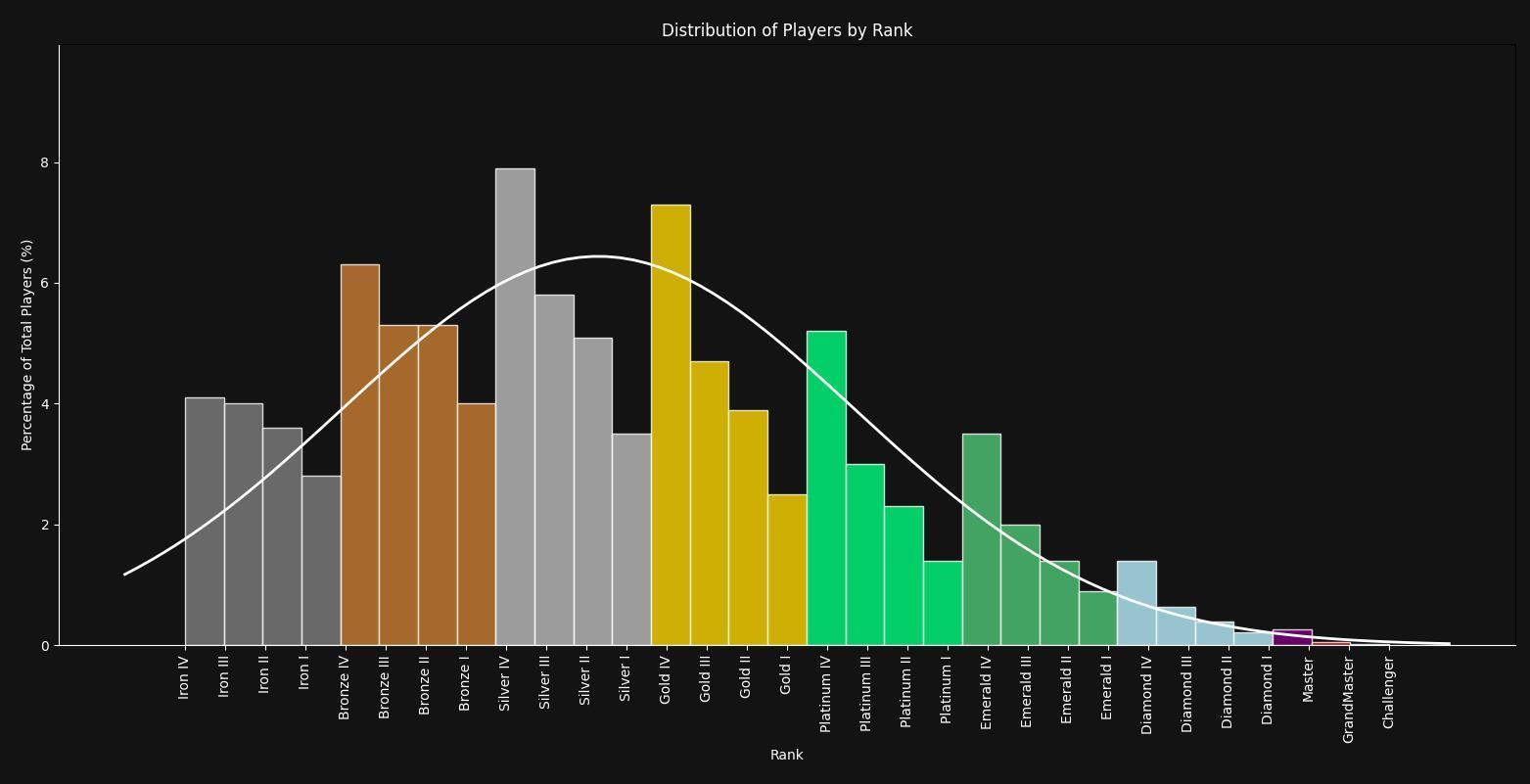
Where is your rank located within the regional and global League of Legends community? LoL player rank distribution isn’t evenly spread across the tiers; instead, it forms a classic right positive skew, with the majority of players in the Silver and Gold tiers, and a long tail of much fewer high-elo players.
Here is the solo queue rank distribution:
Reaching Gold is a significant milestone, placing you above the average player and unlocking most of the seasonal rewards. Breaking into Emerald or Diamond marks you as a skilled competitor. Master and above? You can reach your dream rank efficiently with proper LoL coaching.
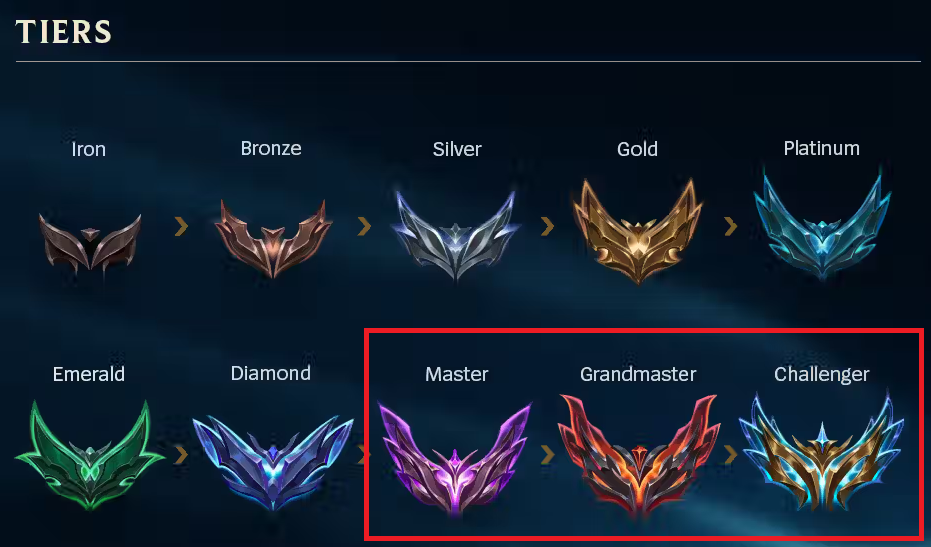
Once you get to Diamond I, you’re just a few games away from the Apex Tiers: Master, Grandmaster, and Challenger, and the rules change here. Divisions no longer exist. You will simply gain or lose LP accumulatively.
You promote from Diamond 1 to Master as soon as you hit 100 LP in Diamond 1, and any excess LP gain carries over directly into Master.
These ranks make the leaderboards. Grandmaster requires a minimum of 200 LP in Master, and Challenger requires a minimum of 500 LP.
Besides the minimum requirement, only a fixed number of the highest-LP players in a region can get these two ranks. Every 24 hours, the ranked ladder for Master and above is recalculated. The system sorts every player by their current LP in descending order. The highest-ranked X number of players will be given the Challenger rank, while the following Y number of players will receive the Grandmaster rank.
Note that the daily LP cutoff and the numbers X and Y are different in each region. For example, there are 300 Challengers and 700 Grandmaster players in the NA and EUW solo queue.

To stay in the highest rank, you have to keep playing. Rank decay is a mechanic unique to players in Diamond+. Take too many days off, and you lose massive LP; there is constant pressure to defend your spot at the top.
All apex tiers are subject to rank decay, which is a 75 LP loss per day against inactivity. For Diamond players, this number is 50 LP. Players can prevent decay by playing games to earn banked days.
Master, Grandmaster, and Challenger players are given 14 initial days before decay. They bank 1 day per 1 game played and can bank a maximum of 14 days at a time. Diamond players are given 28 initial days before decay. They bank 7 days per 1 game played and can bank a maximum of 28 days at a time.
If Master+ players are inactive for way too long, they will eventually descend into Diamond II as the bottom line, not Platinum I, and will restart their climb from there.